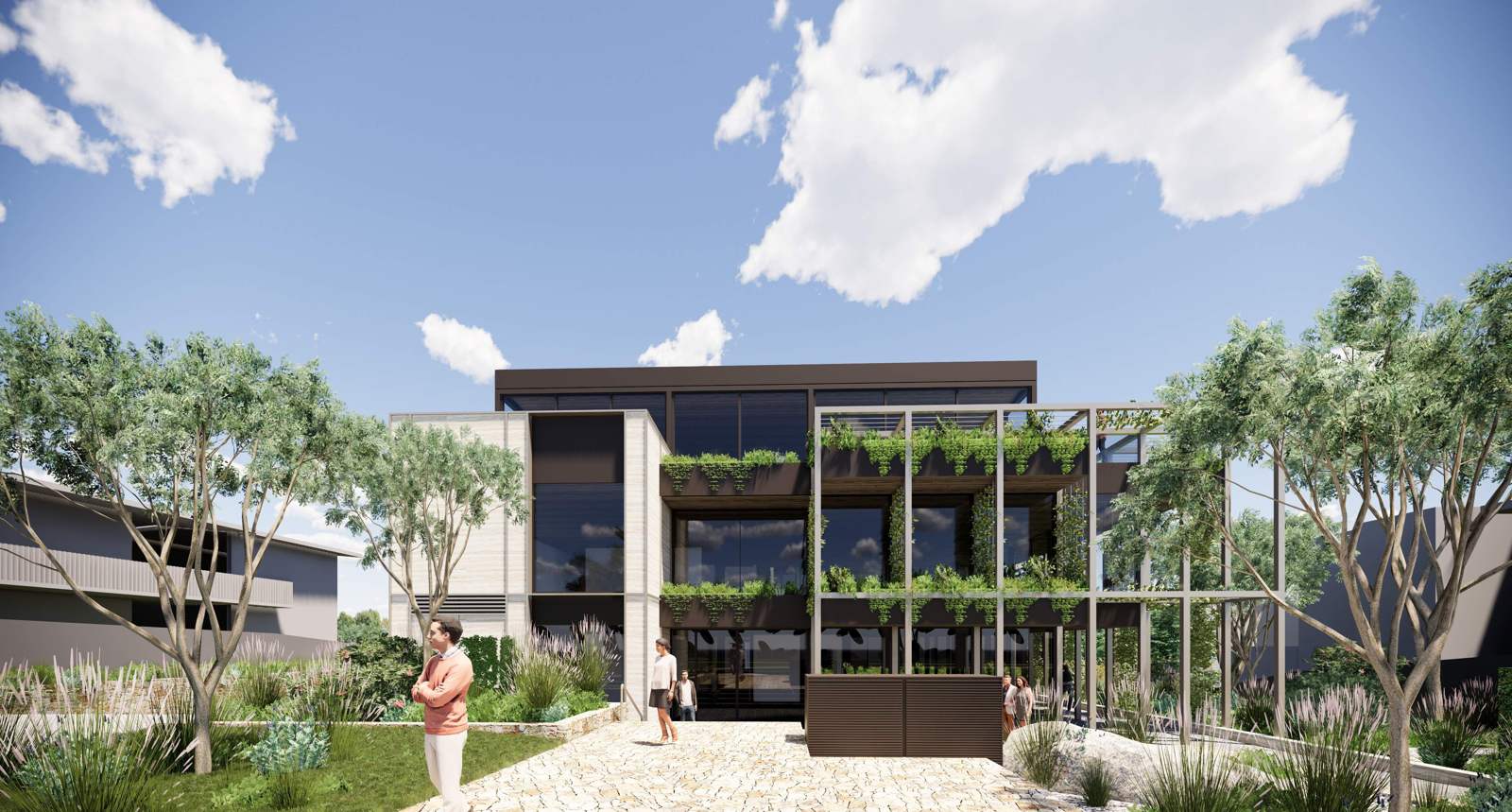Interview with Chris Hayton Rothelowman, Architect for Aged Care planning proposal for 3233-3325 Pt Nepean Road, Sorrento.
Grounded within its natural environment, Sorrento on the Bay at 3233-3325 Pt Nepean Road is a landmark opportunity to create a distinctive residence for older Australians by re-imagining “the old people’s home” as an inviting and inspiring public space.
Sorrento on the Bay has been carefully considered as a series of four inter-connecting structures allowing residents to age in place with grace and dignity. As a building of considered spaces and surfaces, Sorrento on the Bay provides high quality aged care for local area residents with an outlook both sensitive to the environment and respectful of surrounding residents as well as those proposed to inhabit the residence. But most importantly, Sorrento on the Bay represents an opportunity to develop aged care that not only meets community expectations with a high-quality design but elevates the benchmark for aged care and informs productive conversations on the improvement of assisted living.
Sorrento and the Mornington Peninsula will have an opportunity to lead the discussion on aged care living with a landmark building intended to continue the conversation started by the Royal Commission into Aged Care and realise its ecommendations as a highly desirable place to live and live around. The intention is that it will be analysed as a successful model for shared living for the elderly and give rise to interpretation in communities throughout Australia and the world. This in turn, will establish Sorrento as a leader in supporting better outcomes for aged care living. Responding to the unique landscape of the area, the modulated form is highly articulated to appear as a part of the landscape of the area. Even
though it’s larger than neighbouring homes, Sorrento on the Bay is respectful to the site and area’s reputation for well-designed, architecturally significant structures stretching back to the early founding of Sorrento at Sullivan’s Bay in 1803.
The colour palette and material selection create a refined appearance in keeping with the community’s deep connection with the dunes, water and elements of seaside landscaping. Globally renowned architect Chris Hayton Rothelowman began exploring the site from the location with coastal architecture informing the design. “It presents as a series of four singular buildings,” he explains, emulating the neighbourhood’s beach houses. “Connected by what we abstractly call the promenade, which is again a metaphor that we draw directly from its coastal association.” Appearing at two and a half storeys from the southern side and three from the street, the building is four storeys, offering accommodation for up to 84 residents within a built environment designed on a scale to emulate the conviviality of village living. Each building, connected by walkways, allows residents to visit the onsite cinema, activity areas and dining room and cafe, or each other, before returning home to their rooms. “There’s a very strong social agenda to this building… we absolutely believe that the way we look after our older people needs to change and to ensure that they still feel part of the broader community,” explains Chris Hayton, Rothelowman.
As Australians continue to live longer, many more will require assisted living towards the end of their lives. The ultimate goal of the Royal Commission into Aged Care is to find strategies that improve the health and wellbeing of the elderly relying on residential assisted living. The evidence is overwhelming that the baseline of assisted living for the aged is well below standards most Australians would accept for themselves or their loved ones.
The design of Sorrento on the Bay responds directly to the increased attention on aged care and desire to create higher standards. As a series of four inter-connected houses, the home allows its residents to visit destinations within the property, all within a manageable scale for those with limited mobility. The result is a perception of travel to and from, contributing to perceived ability and self-reliance which are vital for positive mental health outcomes.
Rothelowman examined aged care living and incorporated thinking that brings together compelling aspects of design and lifestyle. For many aged care residents, home can feel isolated. “They can look out over the bay and enjoy the surrounds,” he explains of Sorrento on the Bay. “This is very much about allowing people to live, meaningful, connected lives as they age.”
The public areas at street level are welcoming and afford residents the opportunity to engage within landscaping carefully blending the built environment and it’s coastal setting.
One of the stated goals of this property is to elevate the discourse on aged care living. Imagining it as four separate houses allows residents to feel at home on a manageable scale whilst neighbors are assured that the building doesn’t diminish values and the deeper sense of community in the area. Whilst the brief to the architect required a baseline of accommodating residents, it’s the shared spaces that deliver greater engagement with visitors and the community at large.
The building represents an opportunity for the community to proudly share in a design moving aged care into a positive direction, where the elderly continue to be embraced where they’re most comfortable and where family and friends can visit easily and feel welcome.
Public and shared spaces have been undergoing a renaissance of sorts. Libraries have embraced technology with interactive spaces encouraging people to read more. Playgrounds and schools are incorporating natural play whilst workplaces are more flexible with hot desks and greater meeting spaces. Aged care is now being re-imagined as an opportunity to invite the wider community to participate and encourage greater visitation. As Chris explains, “Maybe family and friends may visit the elderly more often if the homes themselves are more comfortable and welcoming.”
For Sorrento, this plan represents an opportunity to be at the forefront of a new way of thinking about aged care and its impact on communities for years to come with a highly credentialed landmark design.

